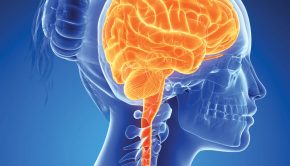CHASING ZZZZZs
By Marlaina Donato
How to Put Insomnia to Rest
Tossing and turning most of the night while obsessing about the need for sleep is a torture we all go through every now and then, but for the 40 percent of Americans dealing with current or chronic insomnia, it can be a regular nightmare. In fact, 50 to 70 million adults in the U.S. suffer from some form of sleep disorder, according to the American Sleep Association.
The causes are multi-faceted: stress, pharmaceutical side effects, hormonal imbalances, chronic pain, anxiety and too much caffeine all fuel the insomnia loop. Add to that the overstimulation from 24/7 technology, social pressures and unresolved emotional pain, and it’s easy to see why long, hard, sleepless nights have become a worldwide epidemic.
The effects are profound. Compromised sleep not only leads to decreased quality of life, malnourished relationships, a heightened risk of accidents and inferior job performance, but also lowered immunity and chronic inflammation, raising the odds of heart disease, stroke, high blood pressure, weight gain and diabetes. About 90 percent of people diagnosed with depression also experience sleep deprivation, and many antidepressant medications can disrupt the ability to fall asleep and dream.
However, a number of natural and holistic approaches can provide lasting results without undesirable side effects. Along with tried-and-true methods like acupuncture, therapeutic massage and changes in diet and exercise, the National Sleep Foundation recommends mindful breathing and meditation. New options are emerging to help foster quality sleep, including cognitive behavioral therapy (CBT), non-psychoactive CBD oil and lifestyle changes supporting a healthy circadian rhythm.
Body and Mind, a Tangled Web
Psychological, emotional and physical health all play a role in our ability—or inability—to get a good night’s rest. “Not sleeping well is a sign of a deeper imbalance that needs to be addressed. So, if we’re masking the problem with medication, the underlying cause remains unaddressed,” says Elina Winnel, a sleep coach who works online with clients at TheSleepExpert.com. “Insomnia is a complex issue that has psychological components, but is also affected by deeper mechanisms, including an imbalance between the two main branches of the autonomic nervous system.”
The intricate connection between emotion and sleep-robbing stress hormones explains why insomniacs are often caught in an undertow of racing thoughts and preoccupations Says Winnel, “Stress has become the norm, and most people don’t even realize they’re in that state. This produces stress hormones and can prevent the natural process of sleep from occurring.” Stress also depletes vitamin B and magnesium levels necessary for quality sleep, she adds.
Cindy Davies, owner of the Holistic Sleep Center, in Ferndale, Michigan, has similar views on the role emotion plays in troubled sleep patterns. “We’re chronically suppressing our feelings throughout the day. Our inability to address these emotions culminates in a night spent in bed awake with fears and worries,” she says. “Pushing ourselves to the point of exhaustion can help defend ourselves against dealing with feelings or memories, but impairs our ability to sleep restfully or restoratively.”
Resetting Inherent Rhythms
Circadian rhythm, our biological clock, is a cellular marvel that is affected by light and internal changes in temperature. Stephanie Silberman, Ph.D., a licensed psychologist in Ft. Lauderdale, Florida, and Fellow of the American Academy of Sleep Medicine, explains that it’s helpful to have a circadian rhythm aligned with societal norms so that we’re sleepy at bedtime and active during daylight hours. “When a person’s circadian rhythm is delayed, they will have trouble falling asleep at a regular bedtime, and when it’s advanced, experience sleepiness too early in the evening and then [have] early morning awakenings.”
Circadian rhythm regulates digestion, cellular repair, hormones and many other functions. It also slows down the metabolism during night hours, helping us to stay asleep. “The circadian rhythm can be disrupted by many factors, including traveling to a different time zone, shift work and exposure to blue light late at night while binge-watching your favorite series,” says Winnel.
Our natural hormonal rhythms are wired to release melatonin at certain times, allowing us to rest frequently during the day. Davies explains that an adult’s body is designed for periods of rest every 90 minutes. “Most people don’t have the opportunity to rest every 90 minutes, but if we were able to, we’d be going to bed in a state of rest, instead of exhaustion,” she says.
Our bodies start producing melatonin around 9 p.m., when we should already be winding down, but too often we push ourselves to stay up to watch TV or have “me-time”, says Davies. “In reality, going to bed is the best me-time we can have.”
Herbalist and licensed psychotherapist Jenn J. Allen, in Stroudsburg, Pennsylvania, adds, “People spend up to 10 hours a day on electronic devices, which directly impacts melatonin production and stimulates the fight-or-flight response system in the brain.”
Two Sides of Every Brain
Smartphones and social media have piled even more on our plate, even if we enjoy them. “We’re expected to be constantly ‘on’ and reachable 24/7,” observes Winnel. “This leads to an excessive reliance on our sympathetic nervous system and difficulty switching brainwave states from beta—associated with alertness—to theta and delta, which we experience during sleep. Through practice and specific exercises, it can become easier for us to reach the state of mind needed to nod off.”
To support healthier sleep patterns, Winnel emphasizes the importance of using both hemispheres of the brain while awake. “Particularly in our professional lives, logical and rational processes are rewarded, while creativity is seen as optional. This can cause a chronic imbalance in the way we use the two hemispheres of our brain. Optimal sleep requires equalized functioning in the neurological structures that are unique to each hemisphere.” Mindful breathing and alternate-nostril yogic breathwork can also bring harmony to both hemispheres of the brain and promote deep relaxation.
Promising Plant Allies
Chronic pain can also prevent sound sleep. Allen stresses, “It’s important to understand what is actually causing pain and what type of pain it is. Some chronic pain comes from postural issues or injuries, so massage, chiropractic or gentle movement like yoga can help to drastically reduce the intensity of pain.”
Identifying nutritional deficiencies and supporting the nervous system is also key. “Plants work both physiologically and energetically. Gentle nervine herbs like oats or chamomile can help to soothe the nervous system, and are effective for children and teens. Adaptogenic plants are known historically for helping the body to resist physical, chemical or biological stresses. Tulsi and ashwagandha, when taken consistently, can be useful in helping adults to combat stress,” Allen says, reminding us to also check with a healthcare professional to avoid contraindications.
Going for that extra cup of coffee during the day or pouring a drink or two in the evening are habits that only exacerbate sleep issues. “Caffeine suppresses our body’s ability to feel tired, not by giving us energy, but by increasing the production of adrenaline and suppressing the production of melatonin. Alcohol, like some prescription medications, can interfere with our ability to fall asleep, sleep deeply and experience dreaming states,” cautions Davies.
CBD oil derived from the cannabis plant is an effective pain-reducer and helps to regulate healthy sleep patterns. Cannabidiol (CBD), which does not contain THC (tetrahydrocannabinol), the chemical substance in marijuana responsible for inducing a high, is available as capsules, inhalers and tinctures.
Learning New Tricks
Many sleep-seeking people are reaping the benefits from cognitive behavioral therapy for insomnia (CBT-I). The American College of Physicians recommends it as the first-line therapy for insomnia ahead of medication, citing that it improves sleep and daytime functioning in 70 to 80 percent of treated persons, often without supplemental medication. A meta-analysis published in The Journal of the American Medical Association in 2015 shows that CBT-I can resolve insomnia for 35 percent of people with sleeplessness linked to existing medical and psychiatric conditions such as fibromyalgia or PTSD.
CBT-I helps to change long-held patterns. “CBT includes keeping sleep logs, improving sleep hygiene, learning ways to decrease anxiety and how to associate the bed as a place where we sleep well, instead of the maladaptive thinking that it’s a place to toss and turn,” says Silberman. CBT can also be helpful for chronic pain and other physical problems when underlying issues are treated in conjunction.
A good night’s rest is indeed possible. Davies says, “In order to really change our ability to sleep, we need a complete cultural mindset shift that prioritizes sleep and our need to rest.”
Marlaina Donato is the author of several books and a composer. Connect at AutumnEmbersMusic.com.
<














